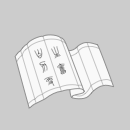
海洋地球科学(Marine Geosciences)(英文版)
全新正版 极速发货
¥ 181.8 6.8折 ¥ 268 全新
库存2件
广东广州
认证卖家担保交易快速发货售后保障
作者王永红,李三忠,王厚杰
出版社科学出版社
ISBN9787030703682
出版时间2021-01
装帧精装
开本16开
定价268元
货号1202546433
上书时间2024-09-06
- 最新上架
商品详情
- 品相描述:全新
- 商品描述
-
目录
Section 1 Basic Geology
1.1 The Earth
1.1.1 Interior of the Earth
1.1.2 Chemical Composition of the Earth
1.1.3 Outer Sphere of the Earth
1.2 Mineral
1.2.1 Physical Properties of Minerals
1.2.2 Common Minerals
1.3 Rock
1.3.1 Three Great Classes of Rocks
1.3.2 Igneous Rocks
1.3.3 Sedimentary Rocks
1.3.4 Metamorphic Rocks
1.4 Erosion and Deposition
1.4.1 Erosion
1.4.2 Geological Action of River
1.4.3 Weathering and Soils
1.4.4 Deposition
1.4.5 Elevations and Subsidence
1.5 Folds and Faults
1.5.1 Folds and Faults
1.5.2 Earthquakes
1.6 The Geologic Time Scale
1.6.1 Fossils
1.6.2 The Geologic Time Scale
1.6.3 Formulation of Geologic Time Scale
1.6.4 Naming of Geologic Periods, Eras and Epochs
Section 2 Ocean Floor Morphology
2.1 Introduction
2.2 Continental Shelf
2.2.1 General Features
2.2.2 Continental Shelf Landforms
2.3 Submarine Canyons
2.3.1 Definitions and Nomenclature
2.3.2 Origin of Submarine Canyons
2.3.3 Significance of Submarine Canyons
2.4 Hadel Trenches
2.4.1 Discovery of Oceanic Trenches
2.4.2 Deep Sea Trenches as Sediment Traps
2.4.3 Accretionary Wedge and Outer Ridge
2.4.4 Subduction Erosion Instead of Accretion
2.5 Bathymetry of Global Ocean Basins
2.5.1 Mapping of Ocean floor Bathymetry
2.5.2 Origin and Geomorphic Characteristics of Ocean Basins
2.5.3 Origin and Geomorphic Characteristics of Bathymetric Ocean Basins
2.6 Submarine Seamounts
2.6.1 Concepts
2.6.2 Submarine Geomorphology of Volcanic Islands and Seamounts
2.7 Mid-Ocean Ridges
2.7.1 General Features
2.7.2 Topography of the Ridges
2.7.3 Topography of the Transform Faults
2.7.4 Formation Processes
Section 3 Tectonics of Ocean Floor
3.1 Introduction
3.2 Mantle Plumes and Heat-pipe Tectonics
3.2.1 Heat-pipe Tectonics
3.2.2 Mantle Plume Tectonics
3.2.3 Pre-plate Tectonic Evolution of Early Earth
3.3 Terrane Tectonics and Micro-block
3.3.1 Terrane Tectonics
3.3.2 Microplate Tectonics
3.4 Continental Drift and Plate Tectonics
3.4.1 Continental Drift Hypothesis
3.4.2 Plate Tectonics Theory
3.4.3 Plate Tectonic Reconstruction
3.5 Subduction Factory
3.5.1 Subduction Zones and Island Arcs
3.5.2 Active Continental Margins
3.5.3 Subduction and Deep Carbon Cycle
3.6 Wilson Cycle and Supercontinent Cycle
3.6.1 Wilson Cycle
3.6.2 Supercontinent Cycle
Section 4 Marine Sediments
4.1 Major Types of Marine Sediments
4.2 Sediments from Source to Sink
4.2.1 Sources of Sediment
4.2.2 Sediment Transfer and Sinks
4.2.3 Source-to-Sink System in Marginal Sea
4.3 Sediment Transport and Redistribution
4.3.1 Sediment Routing and Forcing
4.3.2 The Hjulstr*m Diagram and Role of Water Velocity
4.4 Pelagic Sediments
4.4.1 Pelagic Sediment Types and Distributional Patterns
4.4.2 Sediment Thicknesses and Sedimentation Rates
4.5 Marine Sediments and Climate Change
4.5.1 What Makes the Climate Change?
4.5.2 Paleoclimate Records of Marine Sediments
4.5.3 The Linkage between Marine Sediments and the Earth’s Future Climate
4.6 Sampling of Marine Sediments
Section 5 Coastal Zone
5.1 Coastal Geomorphology
5.1.1 Coastal Classification
5.1.2 Factors Influencing Coastal Morphology and Processes
5.2 Sea-level Changes
5.2.1 Definition
5.2.2 Methods of Measuring Sea-level Change
5.2.3 Factors Affecting Sea-level Change
5.3 Beach and Nearshore Systems
5.3.1 Beach Sediments
5.3.2 Sediment Lateral Movement and Equilibrium Profile
5.3.3 The Longitudinal Movement and Budget of Sediment
5.3.4 Shoreline Change and the Theory
5.4 Rock Coasts
5.4.1 Features and Geomor
内容摘要
本书系统介绍了海洋地球科学的基本知识和理论,介绍了海洋地球科学研究的近期新成果和前沿进展。从基础地质学入手,重点介绍洋底形态和构造、河口海岸带沉积地貌、大陆边缘和远洋沉积,并介绍与人类生活和生产有关的海洋地质资源及海洋地质灾害。本书图文并茂,内容丰富,材料新颖,知识结构合理,逻辑清晰,内容由点到面,由表及里,使学生在掌握海洋地球科学的基本知识和理论的前提下,对本学科有一个系统、科学的认识。
— 没有更多了 —












以下为对购买帮助不大的评价